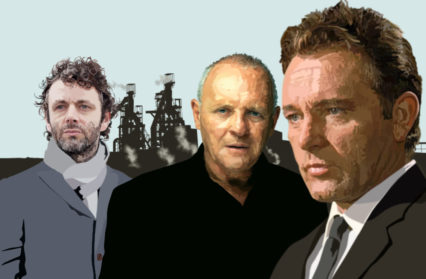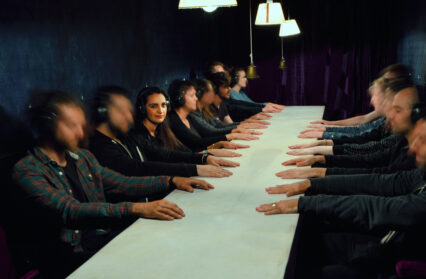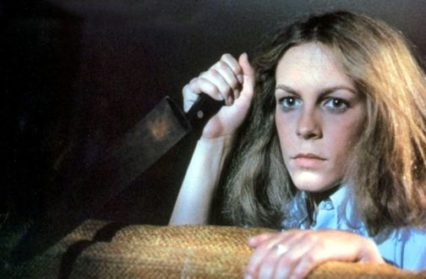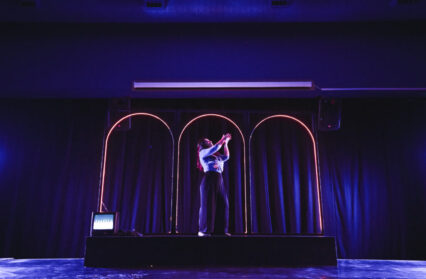In her new book, The Actors’ Crucible, Angela V. John explores the phenomenon of her home town Port Talbot and its unlikely acting tradition. In this extract, John draws lines between Richard Burton, Anthony Hopkins and Michael Sheen, but also looks at others, and asks how this southern industrial town produced such mercurial talent.
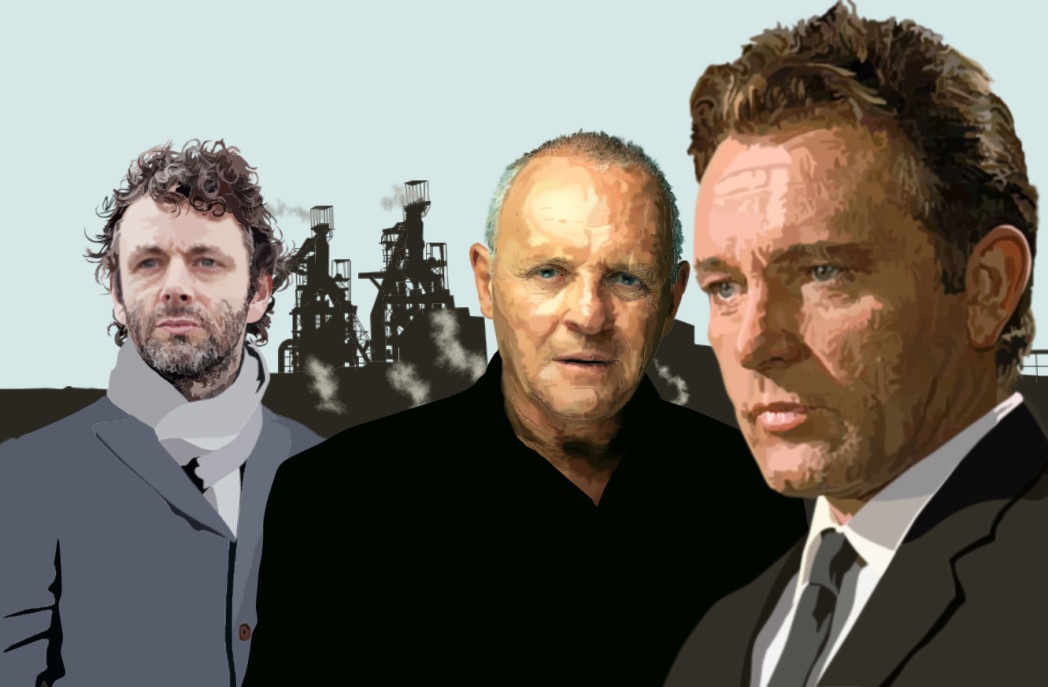
In 1970 an article in The Times suggested that ‘Somewhere in transit from the thickset shadow of Richard Burton towards the leaping light of Laurence Olivier there simmers a volcano: Anthony Hopkins’. For the latter, the Burton legacy has been, in a sense, double-edged. Here was somebody to emulate and he has admitted that he wanted to be like him. In 1992 Hopkins received an Oscar for The Silence of the Lambs and Port Talbot granted him the Freedom of the Borough of Port Talbot. In his acceptance speech he recalled his weekly art lessons with his teacher Bernice Evans in Station Road. As he was painting a pilot in poster colours her boyfriend arrived to take her to see Odd Man Out at the Plaza. Hopkins recalls how, on that golden summer evening, in strode a striking young man. Bernice introduced him and said, ‘This is Richard. He’s going to be an actor’. It was, of course, Richard Burton. Apparently the young Hopkins was suitably impressed and decided that he wanted to be like the actor.
In the early days of Hopkins’ career it was, however, difficult to escape Richard Burton, especially since at times their lifestyles as well as their superb voices invariably invited comparison. Quentin Falk calls him Anthony Hopkins’ ‘constant spectre’. Another biographer claims that by 1957 Hopkins was being dubbed ‘Young Dick Burton’ by Taibach neighbours, a soubriquet he loathed. Yet it seems unlikely that local people, well aware that Rich was how Burton was known, would have used the name Dick.
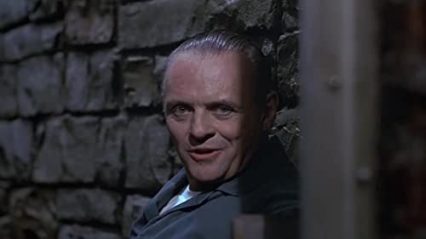
Burton and Hopkins had been the only ones in their families to date to become actors. Both were blessed with unforgettable voices and prodigious memories. Burton delighted especially in his ability to quote at will from Shakespeare. Doug Rees remembers how, at the civic reception for Hopkins’ Freedom of the Borough, he quoted to him Rees’ own lines from the play Outward Bound performed at the YMCA in 1955. But both Burton and Hopkins were also famously cursed by alcoholism when comparatively young. That tendency towards self-destruction was problematic, though what Michael Sheen calls their ‘dark energy’ has had a productive side too, stimulating others.
Anthony Hopkins, who knew Burton’s first wife Sybil, cast their daughter Kate Burton as Helen in a 1995 film he directed (and acted in) called August. Filmed on the Llŷn peninsula, this was Julian Mitchell’s reworking of a translation of Chekhov’s Uncle Vanya in a Welsh setting. It may, at first sight, appear surprising that Hopkins had only met her father Richard Burton a few times. A few years after his encounter at the art class, Hopkins called at Caradoc Street and got the actor’s autograph. In fact there was a connection through marriage between the two families. Burton’s brother-in-law Elfed James, who had raised him with his wife Cis, had a cousin on his father’s side who married into the Phillips family. Anthony Hopkins’ maternal grandmother had been a member of this family, and his name Philip Anthony Hopkins was a genuflection to what was also his mother’s maiden name.
Many years later the two actors met on Broadway. Hopkins starred in 1974 as the psychiatrist in Peter Shaffer’s Equus. Anthony Perkins followed him in this role and then Burton took over. The two men with their Taibach memories met briefly backstage. Burton called at Hopkins’s dressing room and Hopkins returned the compliment when Burton was in the play.
But they never worked together. And this should not come as a surprise. Was there really room for both of them in the same place? Despite their very different styles the world had lumped them together and they both seem to have preferred to respect each other’s space. Only in 1988, a few years after Burton’s death, did the fifty-year-old Anthony Hopkins play First Voice in a complete recording of Under Milk Wood, the first since Burton’s memorable BBC recording in 1954. The new version was for an EMI musical album put together by the Beatles’ former producer George Martin.
Michael Sheen celebrates his Port Talbot predecessors. He feels that Richard Burton and Anthony Hopkins ‘made acting acceptable for sports-mad boys’. In 2010 he presented a radio programme called ‘The Richard Burton Legacy’, in which he described the actor’s voice as ‘one of the great voices of the twentieth century’. The programme included an interview with Burton’s great-nephew Guy Masterson. The son of Cis and Elfed’s daughter Marian, he had been born in London (as Guy Mastroianni) in 1961, but retained strong Welsh connections. An actor and prolific director and producer, he directed Mark Jenkins’ one-man show Playing Burton, which toured the UK and New Zealand in the 1990s.
When quizzed about which British actor he most admires, Sheen cites the ‘embarassment of riches’ provided by his hometown, loyally mentioning Burton and Hopkins. He has also commented on how Burton’s acting taught him a lot about ‘the different ways to deliver power’.
Sheen has played a number of roles made famous by the actor. For example, he was Jimmy Porter in Look Back in Anger at the Royal Exchange in Manchester in 1995 then in 1999, earning nominations for both a Laurence Olivier Award and an Evening Standard for Best Actor (in a drama that he had first studied at O level). The Independent declared that although he had ‘cornered the market in explosive energy’ this was his finest performance to date. Sheen felt that he learned from the way in which Richard Burton ‘reined in’ his anger in his portrayal of the character in the film of John Osborne’s play. In this production Sheen’s old flatmate Jason Hughes (best known as Sergeant Troy in television’s Midsomer Murders) played Cliff, Jimmy Porter’s flatmate. Peter Stead pronounced it ‘one of the theatrical events of the year’ adding that ‘For the first time since Brando, an actor in a vest was the era’s dramatic icon’. The morning after his opening night in Hamlet, Sheen unveiled a plaque to Burton at the house in Lyndhurst Road, Hampstead where he had lived with Sybil.
When Michael Sheen participated in Radio 3’s Private Passions, one of his musical selections was the opening of Jeff Wayne’s musical version of The War of the Worlds, featuring Burton’s voice. And in the same year, the centenary of Dylan Thomas’s birth, Sheen had two opportunities to follow Burton’s vocal repertoire via performances of Under Milk Wood.
The first was in a shortened television version for BBC Wales. Its imaginative casting included Tom Jones as Captain Cat and Bryn Terfel personifying the musical nation through his Reverend Eli Jenkins. Sheen was the First Voice (doing his recording from the States). He won the approval of Gary Raymond in the Wales Arts Review, who saw it as confirmation that he was the ‘only heir’ for the ‘Burton/Hopkins throne’. For Sheen, Burton’s recording was one of the greatest pieces ever produced by the BBC on radio or television.
Then, on 26 October 2014, on the eve of the centenary of Dylan Thomas’s birth, Sheen directed and acted in the play at the 92nd Street ‘Y’ (YMCA) Theatre in Manhattan. This was where Dylan Thomas had done the first read-through of his brand new ‘Play for Voices’ shortly before he died in 1953. Thomas had completed the final lines just hours before the event. As at this original reading, there were only six actors involved. Each read several parts sitting in a semi-circle. Sheen had chosen for his centenary version Richard Burton’s actor daughter Kate (whose mother played Myfanwy Price in the famous recording in 1954), and Port Talbot’s Matthew Aubrey and Francine Morgan were also in Sheen’s select cast. Sheen had studied the play in school and at WGYTC and was highly conscious of the false over-familiarity that can accompany such a well-known piece. He was also keen to bring together Welsh and American audiences, and the event was broadcast live on BBC Radio Wales at the same time as the audience in New York watched and heard the reading.
Burton’s Shakespearean and other stage roles have clearly had an impact on Michael Sheen and reviewers cannot resist citing the Burton-Hopkins lineage. Not surprisingly, Sheen recognises the expectations this can create and that, though a source of pride, it can be demanding. As he stressed in Paul Islwyn Lewis’ excellent 1998 documentary about his career to date (set in large part in Port Talbot and with Sheen reciting lines from his recent stage work): ‘I’m the new Michael Sheen not the next Richard Burton.’
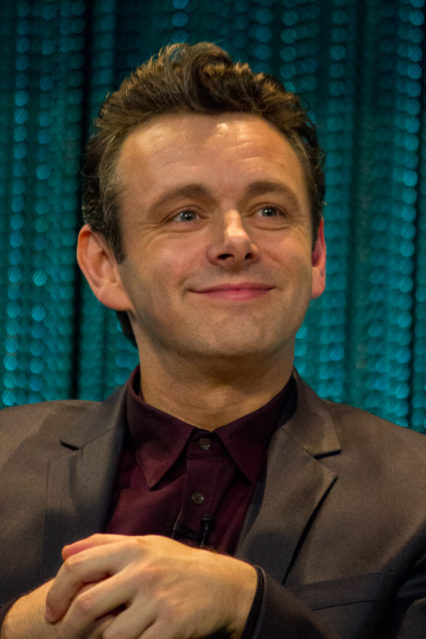
Sheen’s teenage love of cinema had not encompassed the work of Burton and Hopkins. Instead he devoured old black and white movies on television on Sunday afternoons and enjoyed watching the drama critic Kenneth Tynan on the South Bank Show. Anthony Hopkins had seen Burton in The Robe but by the time Sheen was going to the Plaza (those other cinemas so beloved of the earlier stars had already closed), it was new films like Star Wars and Grease that he was enjoying. The legend of Richard Burton had, however, remained pervasive, as had the manifold stories of a larger than life character. As for Anthony Hopkins, it was only in 2007 that Sheen met him. The immense talent and fame of both of the superstars has left an indelible print on the town as well as on the aspirations of its people.
A Port Talbot-born actor who was compared with Richard Burton – and with Gary Cooper – was the matinée idol Ronald Lewis. Born in 1928, just three years after Richard Burton and dying two years before him, Lewis lived in the town until he was seven, when he moved with his family to London. The war years saw him evacuated back to south Wales and Bridgend Grammar School (where he played Bassanio in the school production of The Merchant of Venice). His decision to become an actor was apparently as a result of seeing Shaw’s Saint Joan at the Prince of Wales Theatre in Cardiff. He then headed for RADA.
Lewis’ first professional role was in Oscar Wilde’s An Ideal Husband in 1950 in repertory at Worthing. His film debut came three years later as a boxer in The Square Ring (after playing in it on stage at the Lyric, Hammersmith). According to the South Wales Echo and Express, ‘handsome, tall, manly’ Ronald Lewis ‘took London by storm’ in 1955 in Peter Hall’s production of Eugene O’Neill’s Mourning Becomes Electra at the Arts Club in Leicester Square. This was followed by a starring role opposite Vivien Leigh in Noel Coward’s musical South Sea Bubble.
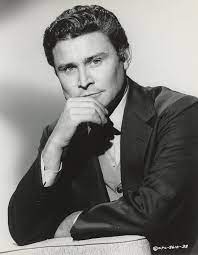
Although he continued on the stage, he now spent much of his time making films for Ealing and Alexander Korda’s London Films. He made more than two dozen films in the fifties and sixties. He was in The Prisoner (1955) with Alec Guinness and Jack Hawkins and in Peter Ustinov’s Billy Budd (1962). His repertoire was wide: from comedies such as Sailor Beware! (1956) to Hammer Horror. But his personal life also became something of a horror story.
During the run of Peter Pan in the West End, Lewis’ wife alleged that he had assaulted her. He failed to appear in court and a warrant was issued for his arrest. He could no longer get work and although he still did some television, a bit part in Z Cars in 1978 marked his final television appearance. He was drinking heavily.
He was to be First Voice in a production of Under Milk Wood at Theatr Gwynedd in 1975. The Pontrhydyfen actor Siân Owen was stage manager and Jennifer Hill from Margam was in the cast (she had acted in the Port Talbot Drama Club in the 1950s before training at LAMDA). As the curtain was about to go up on the first night, Ronnie Lewis lay prostrate on the stage. He had ceased drinking in preparation for the part but the tension of it all had caused him to fit and prompted a heart attack. He was resuscitated and taken to hospital. In 1981 he was declared bankrupt with debts of £21,188. Just months later in January 1982, he took a fatal overdose. His body was discovered in a cheap boarding house in Pimlico. He was fifty-three.
Another contemporary was John Morgan Rees, who also had a tragic end – and a sad start. He was born in Port Talbot in 1927, one of three children. After his father was revealed as a bigamist and went to prison, Rees was put in a local orphanage. Some time later his mother took the children to Cardiff. He did National Service, becoming a renowned army boxer, then trained at Central. In 1954 he was in repertory theatre at Derby Playhouse. He lived in the same digs as John Osborne and his first wife Pamela, who rented an attic room. The three became friends and on Sunday evenings they would share a meal, read the papers and listen to music together. Osborne (descended on his father’s side from several generations of Newportians) was writing Look Back in Anger and the character of the young working class Welshman Cliff Lewis was based in large part on Rees. Certainly the play’s opening scene conjured up the digs in Green Lane, Derby. Three years later, to help the couple gain a divorce, Rees agreed to be co-respondent even though he had not had an affair with Pamela.
Rees did not appear in the play or film of Osborne’s famous work but he was in the cast of six in Peter Gill’s gritty drama The Sleepers Den, set in the playwright’s hometown of Cardiff. He became a close friend of Harold Pinter’s and played Aston in a television production of The Caretaker and toured America in this. Rees appeared in a number of films including Andrew Sinclair’s Under Milk Wood starring Richard Burton. A serious scholar of German – he had made several films in East Germany in the fifties – and of horse riding, he died in Spain in 1994 during a riding holiday. He is buried in Motril. When his family were clearing out his London home they found on the doormat a letter from the daughter he had never known saying she thought he was her father. Her mother had put her up for adoption and she later emigrated to Australia. She took her own life just two years after her father’s death.
Ronald Lewis’ links with Port Talbot did not remain strong and Rees’ connections were tenuous. There have, however, been many others who, although they never reached the dizzy heights of its biggest stars, have also taken to the big and small screen as well as the stage, sometimes combining it with other jobs. They were intrinsically linked with the support for drama that was evident in the town. The first batch of these professional and semi-professional actors were contemporaries of Richard Jenkins at the Sec but are best understood as products of the Philip Burton drama stable.
They include Dennis Burgess, an imposing figure who towers above his classmates in school photographs. He taught locally and was with the YMCA Players until 1955, then joined the Wayfarers. Eventually, thanks to Richard Burton, he became a professional actor (see Chapter 5).
There was Brinley Jenkins who taught for seven years, combining this with radio drama in Cardiff where he worked for his former teacher Philip Burton, now a BBC features producer. Burton recognised Jenkins’ ability but advised him to stick to teaching unless ‘you are completely burned up with a desire to make acting your career’. He was. He took a drama course at Caerleon Training College then joined the BBC Welsh Repertory Company in 1953 (earning £9 weekly) acting in hundreds of Welsh and English radio programmes.
Evan Morgan was another keen student of drama who became a schoolmaster. He was seen as the foundation stone of the Wayfarers and was secretary of the Thespian Players. He also wrote plays and acted for the BBC in radio and television part-time.
Another member of this group was Catherine Dolan, known as Phyllis. She was Richard Burton’s first girlfriend and had acted with him in Pygmalion at school. The local paper praised her diction. She went to RADA and worked in radio and television (appearing in Armchair Theatre in the early 1960s) as well as touring in plays in Europe and the United States.
The leading lady in the Sec plays in the early 1940s had been Dilys Jones. She is an example of those whose passion remained theatre, yet whose main career was not acting. She taught infants. She was from a strict chapel-going family and her mother not keen on the idea of her daughter going on the stage. It had been bad enough when she had uttered the word ‘bloody’ in Pygmalion in 1943 (the Port Talbot Guardian had noted how Philip Burton’s production had ‘no blue pencil censorship’). But Dilys Jones carried on acting for her former school and the BBC, especially in radio programmes for children, blurring the edges between professional and amateur theatre. She even had a tiny part in Burton’s first film The Last Days of Dolwyn. A friend has recalled how much drama mattered to her: ‘The minute you crossed her threshold you were on the stage.’
The town’s key role models for acting have been male. Nevertheless, in 1941 (when Wales had the highest percentage of female war workers in Britain) the Port Talbot Guardian ran an article entitled ‘How to Be a Film Star. Advice for Local Talent’. It paid tribute to the provision of facilities for amateur dramatics in the area, pointing out that numerous successful productions had revealed ‘local stars’ who would, ‘in the ordinary way, never have been suspected of possessing acting powers’. It was becoming tougher to succeed and it was hoped that ‘our local aspirants for stage and film honours will know what is expected of them’. Warning that the demands of technicolour and the modern camera lens were enhancing the need for physical perfection – the article ignored male actors here, seeing this as relevant for women alone – it asked, ‘Can any of our local actresses “make the grade?”’
The paper’s appreciation of the community’s provision of facilities is worth noting. As we have seen, various drama groups provided a basis for nurturing talent. Many British towns had flourishing drama groups and modestly titled Little Theatres could be found close by, for example in Neath and Porthcawl. And, unlike Port Talbot, which had long since lost its New Theatre in a fire, they usually boasted proper theatres for amateur and professional actors. Not until 1958 did Port Talbot gain a modern large space for performances and then it was part of Sandfields Comprehensive. Only with the Princess Royal Theatre, which opened eleven years later, did the town have its own purpose-built theatre once more.
(Original artwork by Dean Lewis)
The Actors’ Crucible: Port Talbot and the Making of Burton, Hopkins, Sheen and All the Others by Angela V. John is available now from Parthian Books.


